What are the most effective paid advertising strategies right now?
Paid advertising is constantly evolving, with new strategies and technologies shaping how businesses reach their audiences. Whether you’re looking to boost sales, generate leads, or increase brand awareness, knowing which paid advertising methods work best right now can help you stay ahead of the competition. Here are the top paid advertising strategies you should be leveraging.
1. Google & Bing Ads: PPC Campaigns Still Reign Supreme
Pay-Per-Click (PPC) advertising remains one of the most effective ways to target people who are actively searching for your products or services. Google and Bing ads allow you to place your business in front of high-intent users, meaning they are already looking for what you offer. By optimising keywords, using responsive search ads, and leveraging automated bidding strategies, businesses can maximise their PPC success.
2. Social Media Ads: What’s Working Best Right Now
Social media platforms continue to be a goldmine for advertisers, but the tactics that work best keep shifting. Here’s what’s driving results:
– Instagram & Facebook: Carousel ads and Reels ads are getting high engagement, while personalised ads using first-party data are proving highly effective.
– TikTok: Short, entertaining videos with a strong call-to-action (CTA) are winning. TikTok Spark Ads (which amplify organic posts) are particularly powerful for paid advertising success.
– LinkedIn: Sponsored content and lead gen forms are excelling for B2B brands looking to capture high-quality leads through paid advertising.
3. AI-Powered Ads: Smarter Automation for Better Results
Artificial intelligence is revolutionising paid advertising by automating placements, optimising bids, and targeting the right audience. Platforms like Google’s Performance Max and Meta’s Advantage+ are using AI to drive better ad performance with minimal manual input. AI-powered targeting ensures that ads reach the right people at the right time, improving return on investment (ROI).
4. Video Ads: The Rise of Short-Form Content
Video content is dominating paid advertising strategies, with platforms like YouTube, TikTok, and Instagram Reels leading the charge. Short-form videos (under 30 seconds) are particularly effective, capturing attention quickly and delivering a strong message in a digestible format. Brands using engaging, high-quality video ads see higher engagement and conversion rates.
5. Retargeting: Keeping Your Brand Top of Mind
Retargeting remains one of the most powerful paid advertising strategies. By showing ads to users who have previously visited your website or engaged with your content, you can keep your brand fresh in their minds and encourage them to take action. Tools like Facebook Pixel, Google’s remarketing lists, and dynamic product ads help brands effectively re-engage potential customers and drive conversions.
6. Native Ads: Blending in for Better Engagement
Native ads are a powerful paid advertising strategy because they blend seamlessly with the content people are already consuming, making them less intrusive and more engaging. Platforms like Outbrain and Taboola, along with native placements on LinkedIn and Instagram, allow brands to integrate their messaging naturally into user experiences, driving higher engagement and conversions.
7. Influencer Partnerships: Still a Smart Move
While influencer marketing has evolved, it remains a highly effective paid advertising strategy. Micro and nano-influencers (those with smaller but highly engaged audiences) are delivering better ROI than mega influencers. Brands that collaborate with influencers for sponsored posts, Stories, and TikTok videos can drive trust and conversions with highly targeted audiences.
8. Local Ads: Hyper-Targeted Campaigns for Nearby Customers
For businesses looking to attract local customers, hyper-targeted local ads are essential. Google Local Services Ads, Facebook’s local awareness ads, and geotargeted promotions help businesses connect with nearby audiences who are more likely to convert. Adding location-based keywords and leveraging Google My Business can also boost visibility.
9. Tracking Results: The Metrics That Matter
No paid advertising strategy is complete without tracking performance. The key metrics to monitor include:
– Click-through rate (CTR): How often people click on your ads.
– Conversion rate: How many clicks turn into actual sales or leads.
– Return on ad spend (ROAS): The revenue generated from each pound spent on ads.
– Cost per acquisition (CPA): How much you’re paying for each new customer.
Using analytics tools like Google Ads Manager, Facebook Business Suite, and third-party tracking software ensures you’re making data-driven decisions.
10. What’s Next? Emerging Trends to Watch
The future of paid advertising is constantly shifting, with new trends emerging, such as:
– Voice search ads: Optimising for voice-activated search queries on platforms like Alexa and Google Assistant.
– Dynamic content ads: AI-driven ads that adapt in real-time based on user behaviour and preferences.
– Augmented reality (AR) ads: Interactive ads that let users try products before buying (popular on Snapchat and Instagram).
By staying ahead of these trends and continually testing new ad formats, businesses can maintain a competitive edge in the digital advertising landscape.
Final Thoughts
The best paid advertising strategies right now combine traditional PPC with emerging technologies and innovative formats. Whether you’re leveraging Google Ads, social media campaigns, AI automation, or influencer marketing, staying adaptable and tracking your results will ensure long-term success. The key is to test, optimise, and refine your strategy based on data and performance insights. Are you ready to elevate your paid advertising game? Try out these strategies and watch your business grow!
Get in touch with us today to explore the most effective paid advertising strategies for your business.


